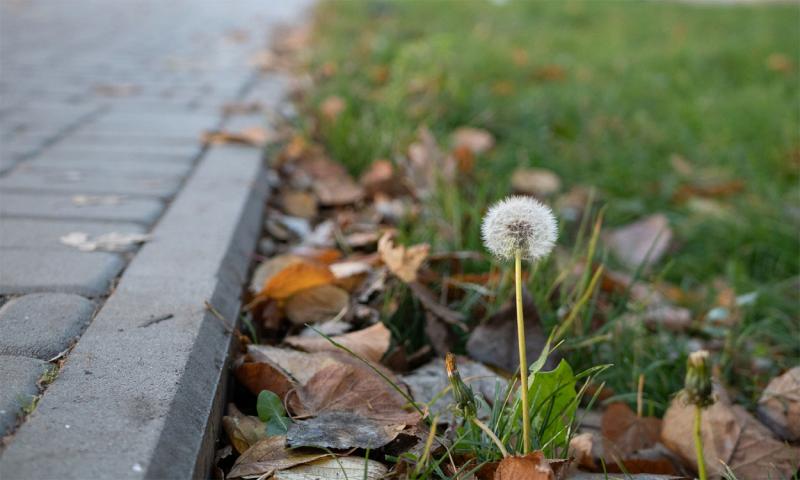
Originally written by Gared Shaffer, former SDSU Extension Weeds Field Specialist.
In lawns, fall is the best time to chemically control broadleaf perennial weeds. Examples of these weeds could include dandelions, Canada thistle, creeping bellflower, field bindweed and ground ivy. These types of weeds gather energy in the fall to reproduce in the coming year by storing energy up in the roots. This stored up energy in the fall gives the plant more opportunity in the following growing season to reproduce through seed production and root development.
Why control broadleaf perennial weeds in the fall?
Many broadleaf perennial weeds germinate and store up nutrients in the fall when the growing conditions are favorable to their growth. These newly germinated weeds overwinter as small plants and mature plants over winter with stored up nutrients in their root systems. Warm spring weather promotes the plants’ rapid growth and flowering using the stored energy from previous fall. During the spring and summer months, it is difficult to control these plants, compared to fall. It may take two to three times the amount of chemical to control perennial plants in the spring or summer months. This is due to the maturity of the plant and extensive root system that has been developed over time. It has been found that applying chemicals to control perennial weeds after the first hard frost will increase control. This is due to the weed increasing nutrient uptake into the root system and increases in chemical movement in the weed to increase control.
Which chemical control is better, granular or liquid?
Many products are helpful in controlling these broadleaf perennial weeds. Some of these products are available with liquid forms and granular forms. Both can be effective, but each have their advantages and disadvantages. Liquid products have been found to normally give more-effective control than granular. There is a higher chance of getting good coverage of the weed leaf area with liquid than with granular products. Also, liquid performs better under a wider variety of lawn conditions. When using liquid forms of chemicals, make sure the weeds are actively growing with several days of growth on their leaves to give optimum chemical uptake. Be cautious of air temperature when applying liquid chemical. They should be sprayed when the daily high temperature will remain above 55 degrees Fahrenheit for a few days. When applying granular products, make sure grass is damp. The dampness causes the granular herbicide to stick to the weeds and cause more chemical to enter the weeds to control them. For example, apply granular products in the morning after a hard dew is present on the lawn. No matter what product you use, to achieve 100% control it will take multiple applications. Reaching the point of a weed-free yard is possible, but the land owner must realize seed movement can move into their property from neighboring areas, creating future issues. Active ingredients to look for on the label could include: 2,4D, dicamba, triclopyr, carfentrazone, sulfentrazone and mesotrione. Be sure to follow all label instructions for any product that you use on your lawn.


